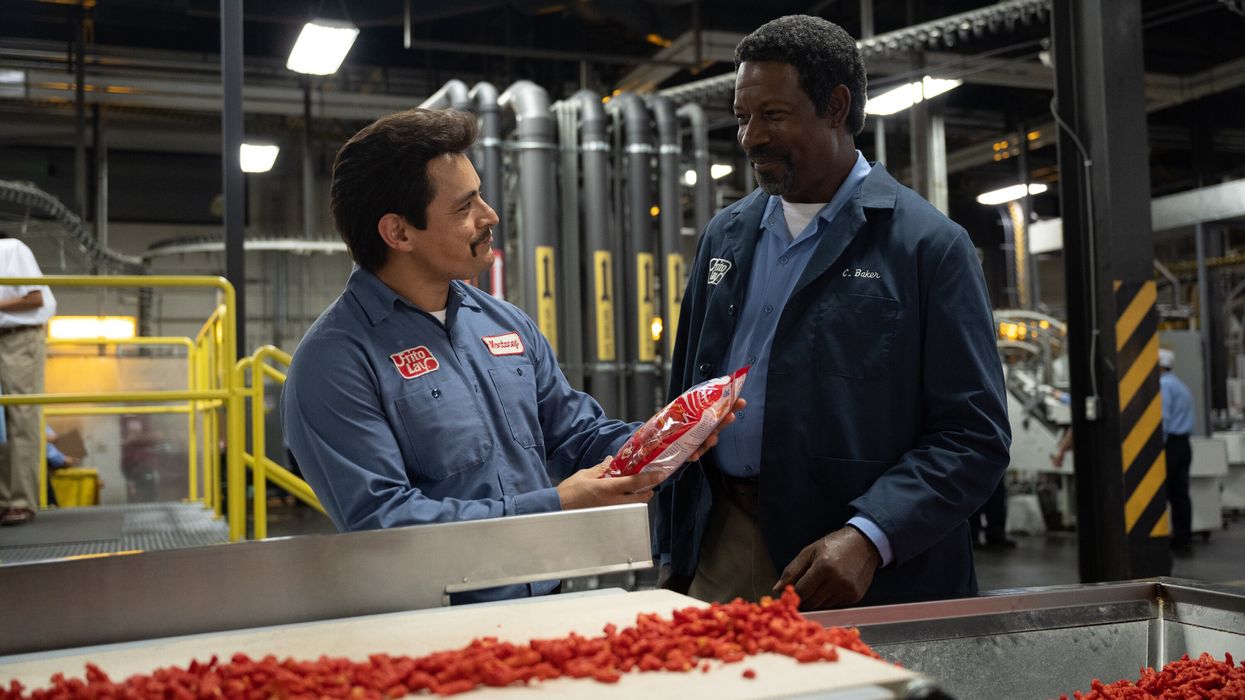How 'Flamin' Hot' Production Designer Cabot McMullen Recreated History
Production designer Cabot McMullen talks about the challenges and rewarding moments working on Eva Longoria's 'Flamin' Hot.'

'Flamin' Hot'
This post was written by Cabot McMullen.
When I am asked what inspired me to work on Flamin' Hot, my immediate answer will always be: Eva Longoria.
She inspired all of us with her personal take on Richard Montanez’s story which was informed by her own life story as a Latina striver from Corpus Christi, Texas, and underdog businesswoman.

I first met Eva as my director for the HBO pilot The Gordita Chronicles, a story about an immigrant family in the Dominican Republic who leave everything they know and love to start a new life in 1980s America. There were many similarities to the challenges faced by the characters in Flamin' Hot and much of it was set in the same period, so we already had a creative shorthand when Eva invited me to join what would be her first feature film as director.
She introduced me to Brandon Mendez and invited us to meet up in Albuquerque New Mexico to design the Flamin' Hot production together. Eva, Cinematographer Federico Cantini, Brandon, and I became a creative hydra beast tackling every challenge together. It was a grand 24/7 adventure that produced work we are all very proud of and we became great friends along the way.
The film spanned three decades of Richard’s life, the 1960s through the 1980s, from rags to comparable riches. So one of our big challenges was collecting the huge amount of visual research needed to verify the details of a culture not heavily documented due to the lack of camera ownership in the Chicano community.
We ended up finding a lot of what was needed via non-traditional resources–personal photo albums from crew members, Cholo holiday blogs, vintage YouTube videos, etc.

Frito-Lay factory interiors were never publicly shown or documented back then due to strict protec0ons of their proprietary process, so our Eureka moment occurred when we found a vintage home video on YouTube taken by a 6th-grade girl on a class field trip to a Frito-Lay plant in the Midwest. It showed us everything we needed to know without having to sign an NDA.
We had 108 settings and locations to film in just over 30 days. Needless to say, there were many challenges getting this to the finish line. Some situations we could control, others like the July monsoon rainy season in New Mexico were beyond anyone’s control and disrupted many of our best-laid plans.
One of the more memorable moments for me on the film was the first time we fired up the assembly line of the Frito-Lay factory set. It was then that we knew it was all going to work as planned. Eva had the great idea to not reveal the color red anywhere in the movie until we see the very first Flamin' Hot Red Cheetos spill out of the giant rota0ng chrome tumblers and out onto the line of conveyor belts, it was rivers of jumping red collettes. In that first moment when it all came together on set, everyone was cheering… especially Eva. And it worked again, and again, take after take, for weeks.

I’ve had many influences as a designer that shaped my work on this movie. My formative years in architectural design and later years spent shooting films on location everywhere influenced my approach to this 100 percent location-based movie. Understanding vernacular buildings, proportions, architectural style, how sunlight tracks and lands on a landscape, foreground elements vs backgrounds and how that relationship affects depth of field, how best to frame that shot as well as considering the color story of a place gave me the ability to recommend or reject loca0ons to our director with confidence. That and my early years as a theatrical stage set designer was instrumental in helping us design a factory set which was basically a mechanical theatrical unit set on wheels, engineered to perform just like the Broadway stage sets I used to work on.
I did not go to film school, so my becoming a filmmaker was accidental, and my path forward was somewhat unorthodox. My advice to aspiring filmmakers may not be for everyone, but I would say, first and foremost, trust your instincts, study the classics, learn from the greats, and be inspired by their choices but go forward with your own POV and speak with your own voice.

In the art department, we are the first ones to arrive and the last ones to leave and we manage 7 percent of the budget requiring solid management skills and the ability to deliver deadlines under extreme pressure. As a result, this job takes immense fortitude, perseverance, belief in yourself, and dedication to your craft just to get through a ‘normal’ day. Every one of those days on set you will learn something that will serve you later on. So, don’t be picky, do whatever work you can, whatever it is, whenever, wherever, with whomever you can, and you will one day see the artist emerge that you already know is inside. It is a grind, it will always be a grind, so keep grinding, that’s the job.
My favorite Exec. Producer Gary David Goldberg used to say to complainers on his sets, “Hey–beats a real job!” Just know there is no such thing as an overnight success in this business. We are all shaped by the accumulated knowledge and experience we gain from practice. Great design doesn’t exist un0l you know how to build it, and keep it from falling apart.
This post was written by Cabot McMullen.
- The Flamin' Hot Cheetos Biopic Just Got Weirder ›
- How to Transition Roles Within the Film Industry with ‘Flamin’ Hot’ Director Eva Longoria ›
















